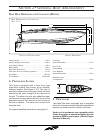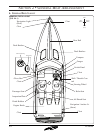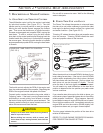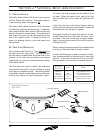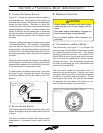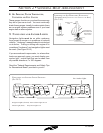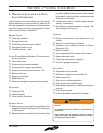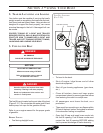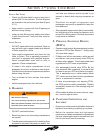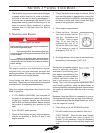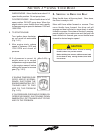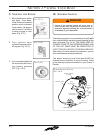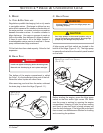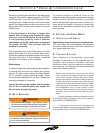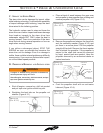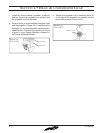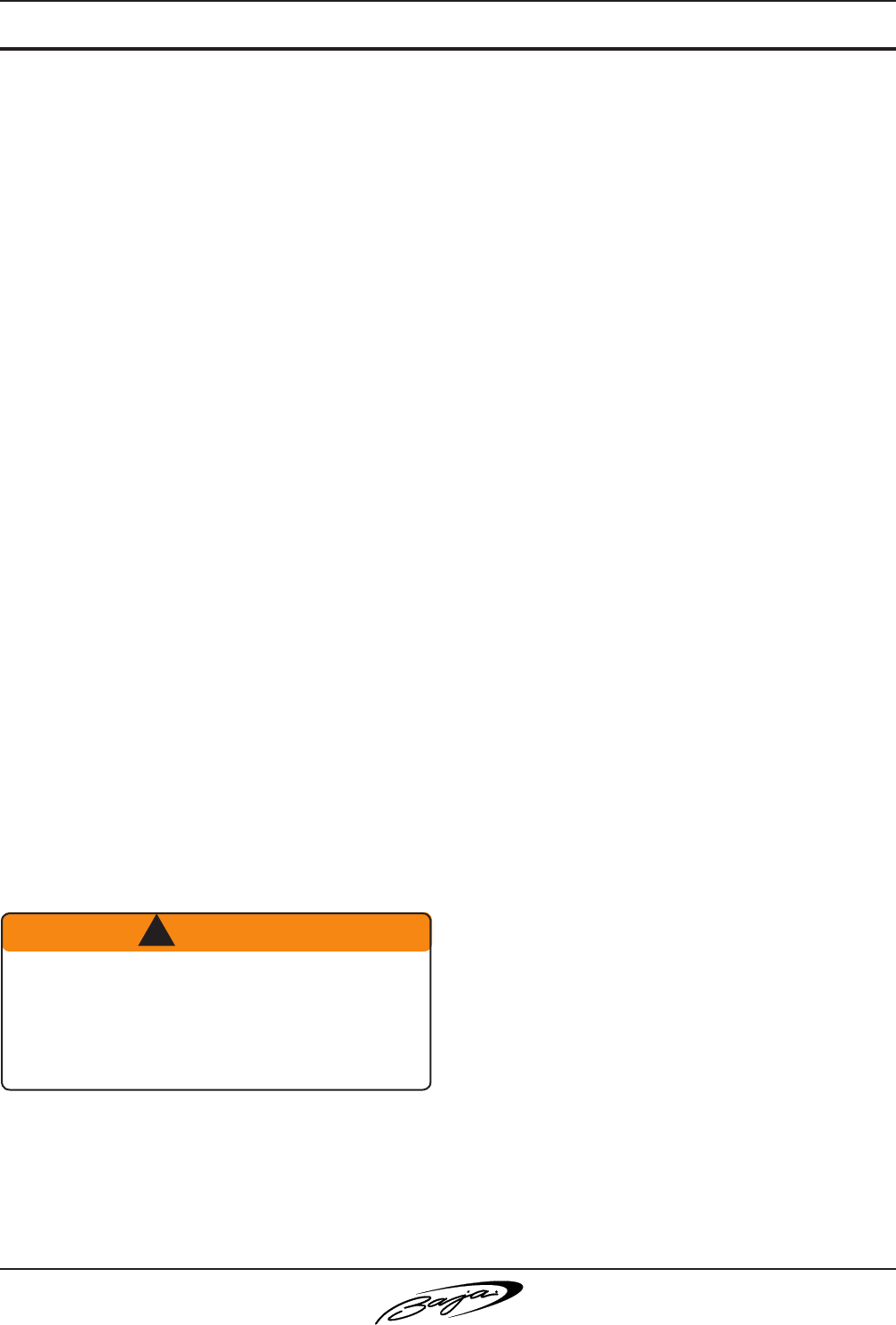
3.3
23 Outlaw
®
SeCtiOn 3 • uSing yOur BOat
R
Speed changes you.
TM.
fillinG The Tanks
• Check the ll plate label to ensure that fuel is
placed ONLY in the fuel tank. The fuel ll plates
are located on the port side of your boat (Figure
3.2.1).
• Keep nozzle in contact with fuel ll opening at
all times during fueling.
• Listen as tank lls and stop adding fuel before
it spills from the vent. Fuel must have room for
expansion.
afTer fillinG
• DO NOT wash spilled fuel overboard. Wipe up
any spill with rags or paper towels and dispose
of them properly on shore.
• Open engine compartment and check for fuel
leaks or fumes. This is especially important if
your boat is equipped with gasoline engines.
Leave compartment open until no odor is
apparent. Close compartment.
• If fumes in the engine compartment do not
disappear, do not turn on blower or start engine.
Get help from trained and experienced persons
before using the boat.
• Turn on blower for four minutes, then restart
engine.
• Assist passengers back into the boat.
4. boarDinG
• DO NOT overload the boat.
• Board one person at a time and give assistance
as needed.
• Transfer gear and equipment by handing it from
a person on the dock to a person on board. You
Wet decks are slippery.
You can be seriously injured if you slip and fall.
Wear slip-resistant footwear secured to your feet and
hold onto rails or boat structure.
! WARNING
can lose your balance and be injured if you
attempt to board while carrying equipment or
gear.
• Distribute the weight of equipment and
passengers as evenly as possible to keep the
boat balanced.
• Stow gear and equipment so that it is accessible,
but everything is to be stored in places so as to
prevent it from ying about if the boat encounters
rough water or weather.
5. personal floTaTion Devices
(pfD’s)
• Operator must instruct all passengers on location
and use of PFD’s (See Section 1- Safety, page
4 for type and usage).
• Children and all non-swimmers, adults as well
as children, must wear properly-sized PFDs at
all times when aboard. Check applicable state
regulations for PFD wear requirements.
• ALL passengers should wear PFDs. By the
time someone falls overboard, it can be to late
for them to put on a PFD and fasten it properly.
This is especially true in colder waters, below
70
o
F, where survival time, before hypothermia
sets in, is measured in minutes.
• If there are passengers not wearing PFDs,
the PFDs must be readily accessible. “Readily
accessible” means out of the storage bag and
unbuckled.
• All throwable otation devices (cushions, rings,
etc.) must be right at hand.
6. passenGer insTrucTion anD
locaTion
• Everyone on board must be told about the boat’s
behavior from starting to getting up on plane.
• Before the operator does any high-speed
maneuvers or rapidly accelerates or decelerates
the boat, passengers must be warned to sit and
hold on and must heed the warning.



